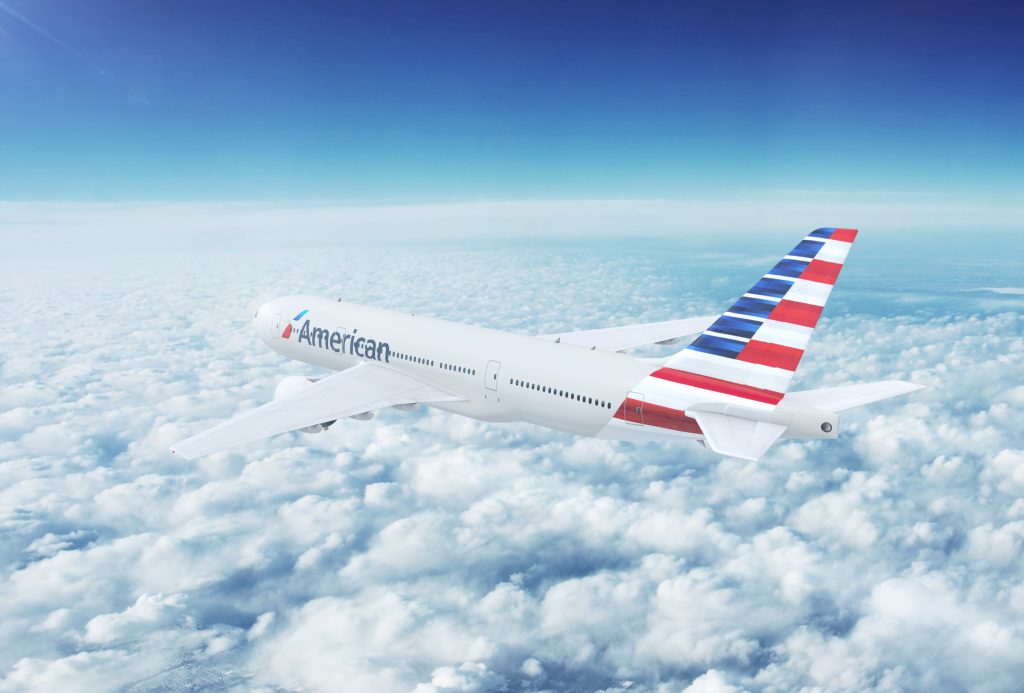Update: One or more card offers in this post are no longer available. Check our Hot Deals for the latest offers.
We all dream about the day when we can stop in the first class cabin instead of walking farther into the plane. While economy and business seats can be a great value, there’s just something special about sitting in first class.
Upgrading to a first class seat with points and miles isn’t too hard to do, and a good deal on a first class seat isn’t too hard to come by, but the question then becomes, is first class worth it? Specifically, let’s dive into if American Airlines’ first class is worth it.
Perks of flying first class with American Airlines
With American Airlines first class, the perks start before boarding. First class passengers, along with business and premium economy passengers, get priority privileges on the ground. This means a faster check-in, security and boarding process on the ground. Plus, you get your checked bags first when you land. Additionally, first class passengers can purchase what American calls “Five Star Service” at select airports. This service includes access to exclusive lounges, car service accommodations, gate service and more.
Once you’re on board, you can expect the first class cabin to have wider seats with more legroom and lie back access, free in-flight entertainment with a wide selection of movies, TV, books, and fast in-flight Wi-Fi. Typically, the first class cabin also has significantly better food and beverage service, but the pandemic has changed that quite a bit for American Airlines (more on this later).
Overall, first class will still have a better quality of service. Flight attendants are more attentive to first class passengers, and your journey will be more calm and comfortable. And don’t forget, flying first class can earn you elite status in the points and miles world.
Average cost of flying first class with American Airlines
American Airlines actually has some of the cheapest first class seats on the market, with domestic flights averaging between $500 and $900, depending on dates of travel and destination. First class seats on international flights aren’t so much of a deal, with the regular ticket costing no less than $4,000 and going up to tens of thousands!
Points and miles are a great way to score a first class seat or upgrade for no cash value. Citi ThankYou points are your best bet to get the best value per mile on American flights, with a first class upgrade costing either 15,000 or 25,000 miles depending on your original class booking. If you want to upgrade to first class with cash, it’ll run you anywhere from $75-$550, depending on your original ticket.
American Airlines first class vs other airlines
In terms of pricing, American Airlines’ first class seats are hard to beat. AA also comes in above other airlines with their checked baggage policies for first class passengers — on American, first class travelers get three checked bags included. On Alaska Airlines, JetBlue, Delta and United, first class passengers only get two checked bags included.
In most other categories, American Airlines is on par with other airlines. Most first class seats are pretty similar. All first class cabins will have an attentive flight staff, and they will all be equipped with fast Wi-Fi and onboard entertainment. Plus, travelers from first class cabins on any airline will get to deboard the plane first (they used to board first, but that policy has changed on many airlines to favor social distancing guidelines).
But, American Airlines’ new food and beverage policy due to the pandemic does make them come up short in that category compared to airlines like JetBlue, which is still offering full gourmet meals and cocktails on flights.
Flying first class during a pandemic
Due to covid, there are some changes to American Airlines’ first class cabin. While these changes will make your flight safer, they definitely limit the first class experience.
If your flight is between 900 and 2,199 miles and/or under 4.5 hours, your first class meal experience isn’t much different than those in economy or business class. All passengers will receive a complimentary snack and water bottle during boarding and can get other non-alcoholic beverages by request only. In the first class cabin on these flights, you’ll get one additional snack if you’re on a late night or early morning flight and alcoholic beverages by request.
For flights over 2,200 miles and/or over 4.5 hours, the first class service is a bit more extensive. While all passengers still get a complimentary snack and water, those in other cabins won’t get a meal unless they’re onboard a long-haul international flight. First class passengers will be given meals on all flights. But, they’ll be served on a tray instead of in courses. Plus, first class travelers will receive alcohol. Additionally, American Airlines has canceled some of their Five Star services, and will not offer Five Star Select, Five Star Private Arrival or Five Star Private Departure.
Bottom line
So, is American Airlines first class worth it? Honestly, it depends on what you want to get out of the first class experience. If you value food and drink services and luxury travel perks, American Airlines has put many that on hold due to the pandemic, so first class isn’t worth it for you. But, if you’re looking for an overall more comfortable and calmer plane ride with excellent service, you can’t go wrong with American Airlines first class.
Featured image by NextNewMedia/Shutterstock.
